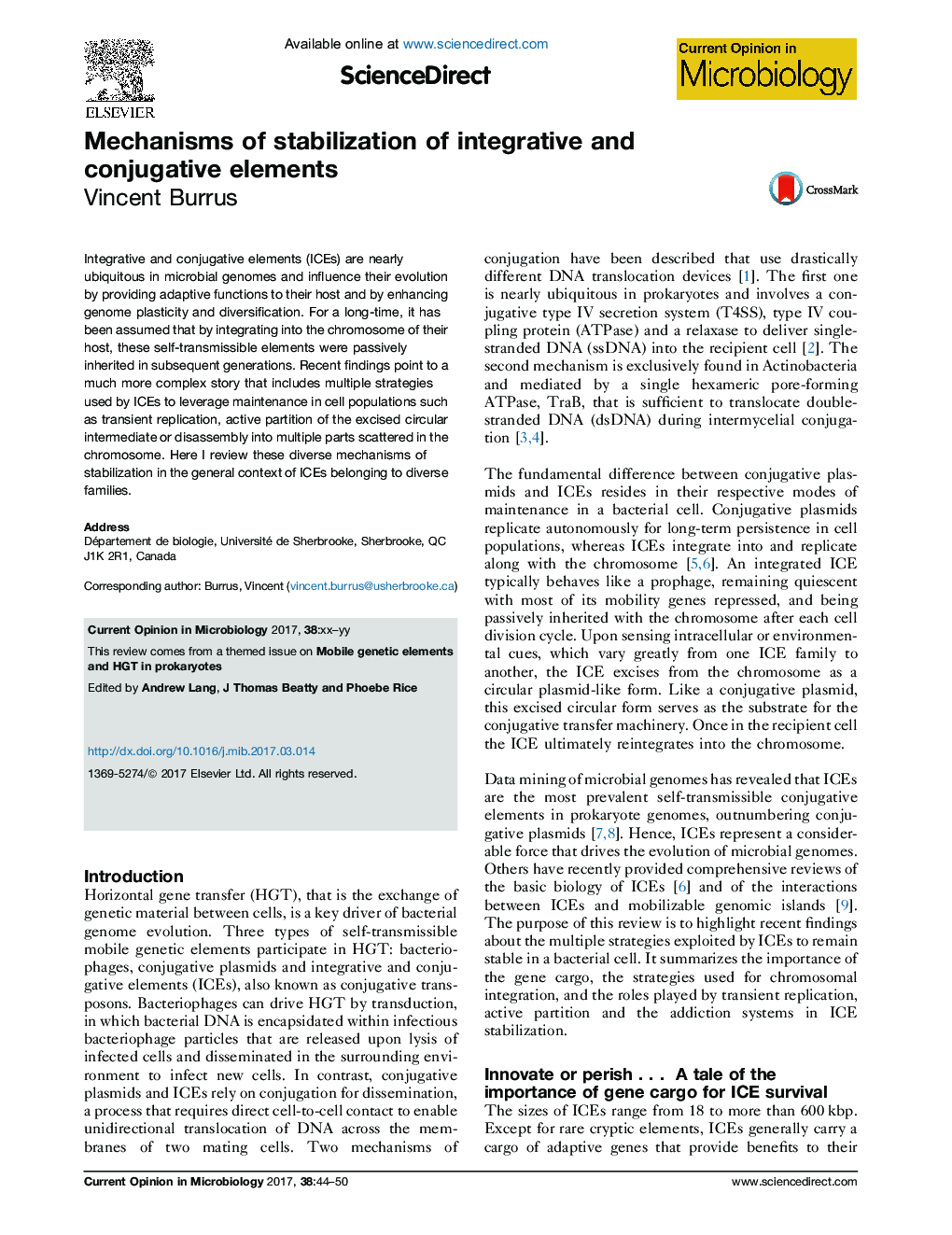| کد مقاله | کد نشریه | سال انتشار | مقاله انگلیسی | نسخه تمام متن |
|---|---|---|---|---|
| 5671691 | 1593031 | 2017 | 7 صفحه PDF | دانلود رایگان |
- Autonomous replication is an important step in the lifecycle of ICEs.
- Replicated ICEs can undergo plasmid-like partitioning.
- ICEs can be stabilized by toxin-antitoxin and restriction-modification systems.
- By trading integrase genes, ICEs can alter their integration site specificity.
- ICEs can be made up of multiple parts scattered over the chromosome.
Integrative and conjugative elements (ICEs) are nearly ubiquitous in microbial genomes and influence their evolution by providing adaptive functions to their host and by enhancing genome plasticity and diversification. For a long-time, it has been assumed that by integrating into the chromosome of their host, these self-transmissible elements were passively inherited in subsequent generations. Recent findings point to a much more complex story that includes multiple strategies used by ICEs to leverage maintenance in cell populations such as transient replication, active partition of the excised circular intermediate or disassembly into multiple parts scattered in the chromosome. Here I review these diverse mechanisms of stabilization in the general context of ICEs belonging to diverse families.
Journal: Current Opinion in Microbiology - Volume 38, August 2017, Pages 44-50
